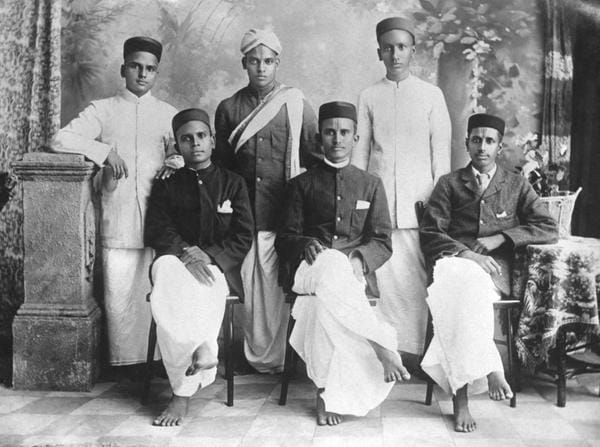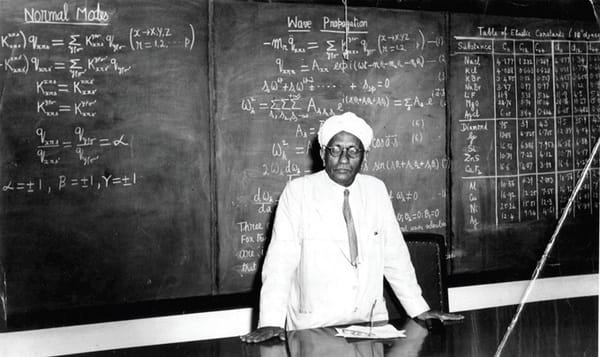
C V Raman in his classroom. Pic courtesy: Oldindianphotos.in
November 2015 marks the 127th birthday, and the 45th year of demise, of Chandrasekhar Venkata Raman, one of the greatest minds produced in the twentieth century. Bengaluru was home to this great mind, nobel laureate who is popular as Sir C V Raman. The city bears many landmarks and institutions in his memory, such as Raman Research Institute, Panchavati – C V Raman’s home in Malleshwaram where he lived, and C V Raman Nagar.
Born in Thiruvanaikaval near Trichinopoly to Chandrashekar Iyer and Parvathi Ammal on November 7, 1888, Raman was a child prodigy. He matriculated at the young age of 11 with barely eight years of training at school. Then he went to Presidency college in Madras on a scholarship to complete his BA as a gold medalist in Physics and English by 15, and completed his Masters degree, again with highest distinctions, by the time he was 19.
Since his childhood days, common sights like the red and golden streaks of light that gild the sunset sky, the shape of the sailing clouds, the swirl of the roaring tides or the splashing of water on tossing a rock into a pond excited him. The sound of the veena, with which he grew up, listening carefully to his musically endowed mother play, or that of the violin played by his father—stimulated his curiosity, and he would be restless till his father gave him explanations to all the phenomenon he questioned.
Sir C V Raman with his classmates. Pic courtesy: Raman Research Institute
Father who went all out to answer son’s questions
Chandrashekar Iyer, who was a physics and mathematics lecturer himself, was often challenged by the questions of his inquisitive young son, and put in a great deal of effort to give him the right answers. Once he had to walk to his college in the middle of the night, for young Raman, burning with a high fever, refused to sleep till his father fetched him the Leyden Jar from his college laboratory and demonstrated its workings.
Sadly, he did not live long enough to see the day when this spark of curiosity, which he had devotedly kindled in his son, grew into a flame that glowed bright enough to bare in its light to the naked eyes of the world, the truths about facets of nature, that were hidden undiscovered.
In college, the professors, who initially wondered if this young boy with a small stature was really a college student, soon realised his outstanding abilities and exempted him from having to attend classes in Physics and Mathematics.
While all the other students, much older than himself, sat in classes and listened to lectures, young Raman was in library, hunched over books originally written by great physicists themselves, or in the laboratory, carrying out independent and original experiments. He published his first research paper in the most prestigious science journal of his time, the Philosophical Magazine (London), when he was only 18. Those were the days when independent research was rarely attempted in India, not only by students, but even by the professors.
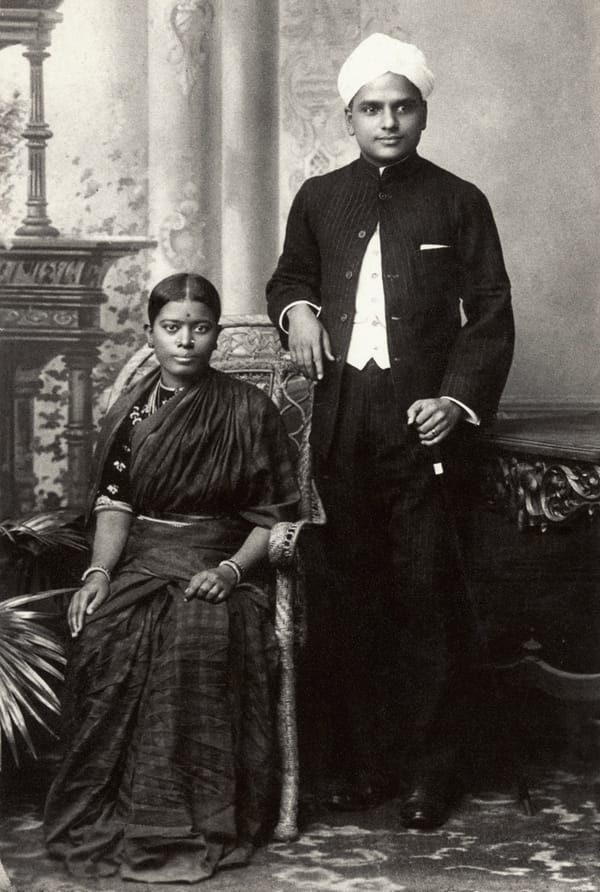
C V Raman and Lokasundari Ammal. Pic courtesy: Raman Research Institute
Into a civil services career and marriage
But with little scope for Indians to have a scientific career in the colonised country, he was advised by his teachers, like all the bright students of that time were, to write Civil Service examination. To no one’s surprise, Raman topped the exam.
It was while waiting for his appointment that Raman first met Lokusundari, a 13-year-old girl who was on that occasion playing on her veena the Thyagaraja Keerthana, “Rama Ni Samanam Evaro”. Against all social conventions of his time, Raman himself arranged for a marriage with her, and off they went to Calcutta where he was posted as the Assistant Accountant General.
Kausilya Ramasheshan, the wife of Prof. Ramasheshan who was a nephew and one of the closest students of Raman, wrote in a newspaper article a few years ago that Lady Raman had once remarked to her, decades after the marriage, that she was still not sure if Raman had married her for the extra 150 rupees the Finance Department paid to its married officers.
Diving deep into research on Raman effect
Less than a week in Calcutta, one day when on the way to work, he accidently stumbled on a board that read “Indian Association for Cultivation of Sciences” and walked in to find out it was a laboratory, though an ill-equipped and a scarcely funded one. This was an event that turned the tides to not only change Raman’s career, but to revolutionise the field of science, and bring to this country its first honour of a Nobel Prize in science. For the next ten years he would spend 5.30 to 9.30 am each morning carrying out various experiments here, before leaving for his day job as a civil servant, and on his way back from work, would go to the lab again, returning home only after 10, as Lady Raman recollects.
Having gained much fame in the scientific circles by regularly publishing research papers during this period, he was offered the prestigious position of Tarakanath Palit Professorship of Physics at University of Calcutta by its Vice-Chancellor, Sir Ashutosh Mukherjee. Though this post paid him only half the amount he received as an Assistant Accountant General, Raman happily resigned from his service and accepted the offer, which provided him with two laboratories, and more funds as well as time to carry out his research work.
While sailing across the Mediterranean in 1921 to Europe as a delegate to Oxford University, the deep blue of the ocean that caught his attention made Raman suspect the validity of Lord Rayleigh’s theory that blue colour of the sea is merely a reflection of the sky. While on ship on his way back to India, Raman collected some sea water and viewed it at its polarising angle through a Nicolai Prism, which in effect, does not allow the reflected light rays to fall on the observer’s eyes. And on discovering that the water, when thus viewed, did not lose its blue colour, as it should have happened if Rayleigh’s theory was correct, but assumed a deeper blue instead, he initiated a series of experiments on scattering of light by molecules of liquid. Eventually these led to the discovery of “Raman effect”, that won him a Nobel Prize in science in 1930, making India the first Asian country to win the honour of such a distinction.
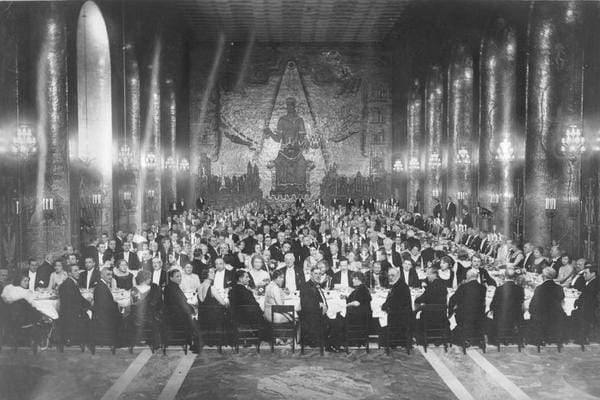
C V Raman at Nobel banquet. Look for the unique white turban to spot him! Pic courtesy: Raman Research Institute
Raman takes over IISc
It was the visionary JN Tata who had envisaged the idea of starting an institute which will conduct original research in all fields of knowledge, and serve as a centre of intellectual renaissance and modernisation in India. But the establishment of his dream institution was opposed by Lord Curzon, the then Viceroy of India, who declared that it would be a seditious step against the Raj, perhaps fearing the potential dangers that might be posed by the development of intellectual movements to the British interests in pre-independent India.
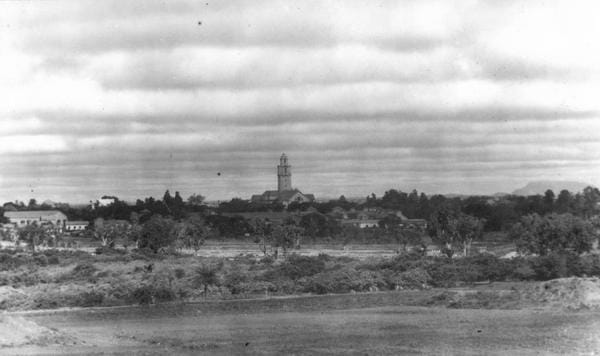
This was the IISC view those days. Pic courtesy: Raman Research Institute
Nonetheless, five years after Tata’s death, his dream was realised on the 150 acres of land in Malleshwaram, Bengaluru, offered to the Tatas by the then Mysore Maharaja, Krishnaraja Wodeyar IV. When at the peak of his scientific career, Sir C V Raman was offered the position of Director at Indian Institute of Science here in Bangalore in the year 1933. Thus began Sir C V Raman’s association with Bengaluru.
References:
- C. V. Raman : A Biography by Uma Parameswaran
- C. V. Raman – A Memoir by A. Jayaram
- Journey into Light by G. Venkataraman
- C.V. Raman – A Pictorial Biography By Prof. Ramasheshan
- Conversations of the reporter with Mrs. Ramasheshan
For part II, click here: The Raman effect on Indian Institute of Science
For part III, click here: Raman, his institute and his many hobbies
Related Articles
From Mysore Maharajas to Mantri Developers: A fascinating tale of land transaction
The man who managed Bangalore’s famous mills
